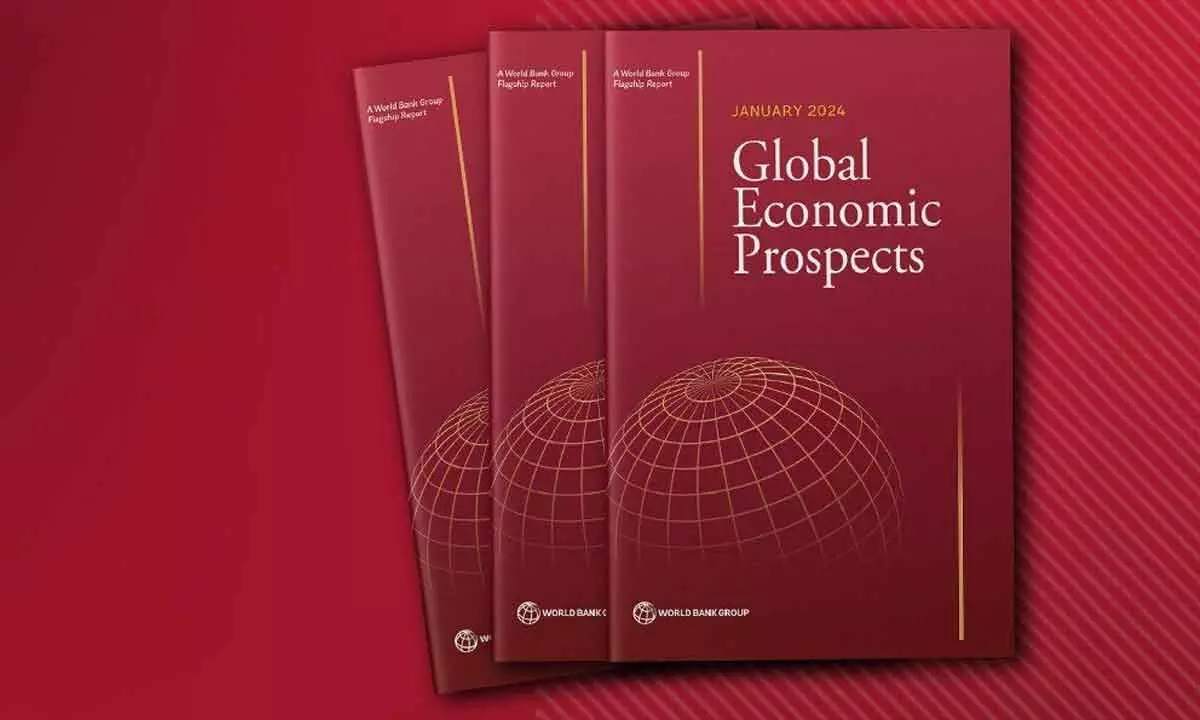World Bank: Investment will decelerate marginally but remains robust
Even advanced economies are projected to grow more slowly than in the pre-Covid decade
image for illustrative purpose

While the forecasts in this report are dismal, its policy analysis provides hope. The report includes the first systematic assessment of what it takes to generate the most desirable kind of investment boom—one that comes with an increase in per-capita income growth, a step-up in productivity and a reduction in poverty
The World Bank sees India retaining the fastest-growing major economy tag, logging 6.4% growth in FY25 and accelerating to 6.5% in FY26 despite a slowdown. “Investment is envisaged to decelerate marginally but remains robust, supported by higher public investment and improved corporate balance sheets, including the banking sector,” the World Bank said in its latest Global Economic Prospects report.
Yet beyond the next two years, the outlook is dark. The end of 2024 will mark the halfway point of what was expected to be a transformative decade for development—when extreme poverty was to be extinguished, when major communicable diseases were to be eradicated, and when greenhouse-gas emissions were to be cut by nearly half.
What looms instead is a wretched milestone: the weakest global growth performance of any half-decade since the 1990s, with people in one out of every four developing economies poorer than they were before the pandemic.
The forecasts imply that most economies—advanced as well as developing—are set to grow more slowly in 2024 and 2025 than they did in the decade before Covid-19. Global growth is expected to slow for the third year-in-a-row—to 2.4 per cent—before ticking up to 2.7 per cent in 2025. Those rates, however, would still be far below the 3.1 percent average of the 2010s. Per-capita investment growth in 2023 and 2024 is expected to average just 3.7 percent—barely half the average of the previous two decades. Without corrective action, global growth will remain well below potential for the remainder of the 2020s. But while the forecasts in this report are dismal, its policy analysis provides hope.
The report includes the first systematic assessment of what it takes to generate the most desirable kind of investment boom—one that comes with an increase in per-capita income growth, a step-up in productivity, and a reduction in poverty. Since the 1950s, countries across the world have managed to generate nearly 200 windfall producing investment booms—episodes in which per-capita investment growth accelerated to four per cent or more and stayed there for more than six years. The secret sauce was a comprehensive policy package: consolidation of government finances, expansion of trade and financial flows, stronger fiscal and financial institutions, and a better investment climate for private enterprise.
If each developing economy that engineered such an investment boom in the 2000s and 2010s were to repeat the feat in the 2020s, prospects for developing economies would move a third of the way closer to their full economic potential. If all developing economies also repeated their best 10-year performance to improve health, education, and labour force participation, they would close most of the remaining gap. That is, the potential growth in developing economies in the 2020s would be similar to what it was during the 2010s. An additional avenue is open to the two-thirds of developing economies that rely on commodity exports. They can do better simply by applying the Hippocratic principle to fiscal policy: Do no harm. These economies are prone to debilitating boom-and-bust cycles because commodity prices can rise or fall suddenly. Their fiscal policies tend to make matters worse. Fiscal pro-cyclicality is 30 per cent stronger in commodity exporting developing economies than it is in other developing economies. Fiscal spending among commodity exporters also tends to be 40 per cent more volatile than in other developing economies.
The World Bank estimates India to grow 6.3% this fiscal. It has projected global growth to slow further to 2.4% in 2024 from 2.6% projected for 2023, calling it the weakest half-a-decade performance in 30 years.
The bank warned that without a “major course correction,” the 2020s will go down as “a decade of wasted opportunity.”
On private consumption in the coming fiscal year, the World Bank said it is likely to taper off.
"As post-pandemic pent-up demand diminishes and persistent high food price inflation is likely to constrain spending, particularly among low-income households.”
The institution cited interest payments as a cause of concern. “In India, government revenues are expected to gain from solid corporate profits and current expenditures are likely to decrease with the conclusion of pandemic-related measures. Interest payments are projected to be large in countries with elevated debt levels, including India, Pakistan and Sri Lanka.”
The bank also flagged risks from extreme weather conditions and events and elections.
“The heightened uncertainty around these elections could dampen activity in the private sector, including foreign investment,” it said, noting that the implementation of policies to reduce uncertainty and strengthen growth potential after elections could lead to an improvement in growth prospects.

